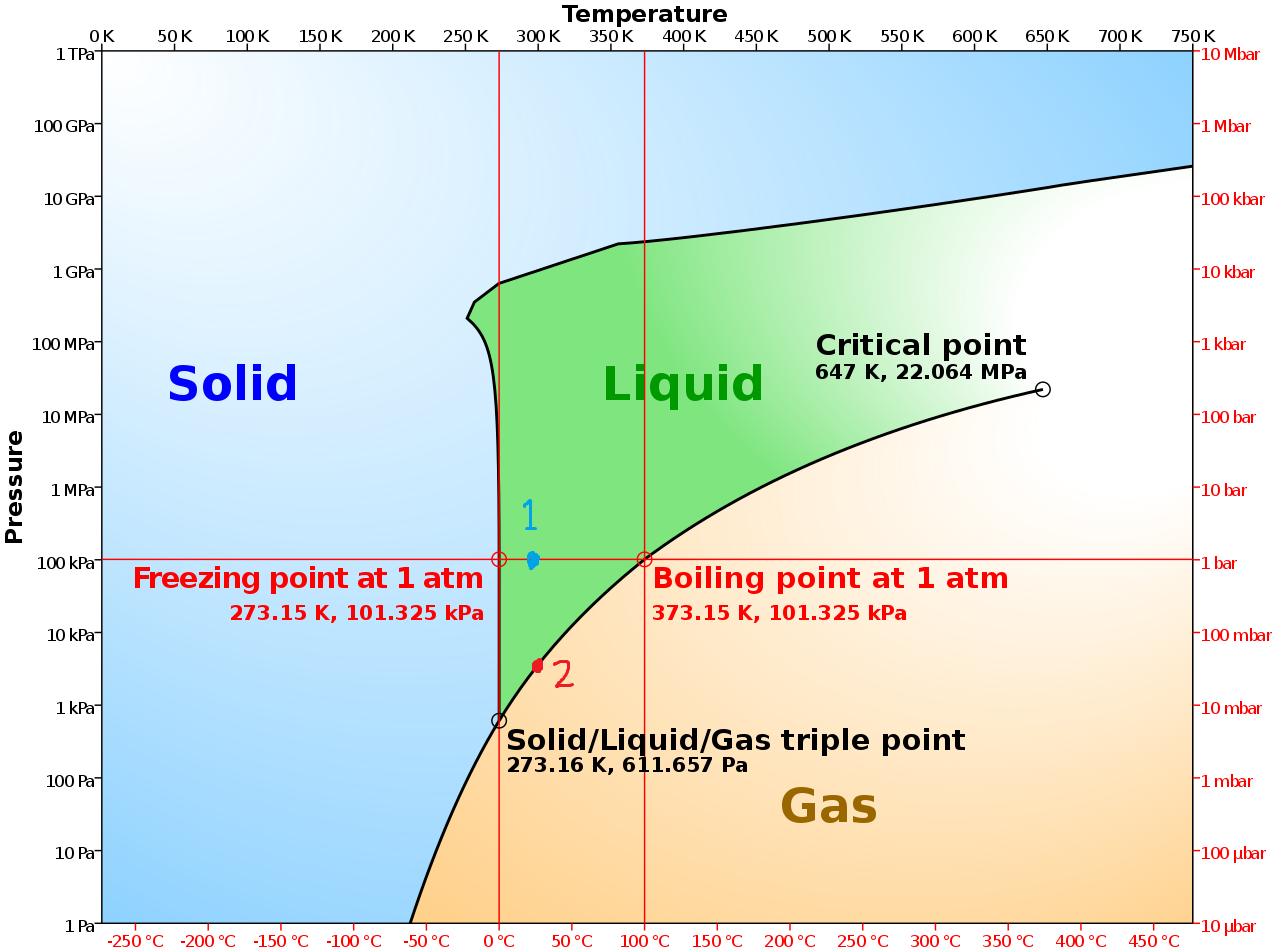The diagram is for the system without air, so at equilibrium, vapor pressure is equal to total pressure (if there is the gaseous phase).
At $\pu{25 ^{\circ}C}$, all water eventually evaporates, if pressure is kept below vapor pressure at $\pu{25 ^{\circ}C}$, or condenses if pressure is kept above the vapor pressure.
The boiling point refers to the total pressure regardless of the gaseous phase composition.
On the other hand, pressure of gaseous mixture cannot be generally used to determine position on the phase diagram. Water at room temperature would evaporate to ambient air, if water vapor partial pressure is lower than (saturated) vapor pressure, in spite of the total pressure being much higher than vapor pressure.
Total pressure can be used for equilibrium between condensed phases.
Reaction to feedback:
If there is solely water vapor in the gaseous phase of the container, and if external pressure is higher than vapor pressure at the given kept temperature, these processes happen:
- External pressure would compress vapor until pressures equilibrate.
- This compression adiabatically heats up the vapor.
- As vapor is oversaturated, it starts condensing, releasing heat.
- This may continue until it reaches temperature when vapor pressure equals to external pressure.
- As heat dissipates to surrounding, vapor keeps being oversaturated and condensing, until there is no vapor left.
With air present, total system pressure keeps mechanical equilibrium with external pressure and liquid water keeps partial vapor pressure equal to (saturated) vapor pressure at the given kept temperature.
If there is initially air in the system with pressure equal to external ambient pressure $\pu{1 atm}$, water will evaporate until it's partial pressure reaches vapor pressure and system will expand to maintain the total pressure equal to ambient pressure (assuming isothermic + isobaric conditions).

